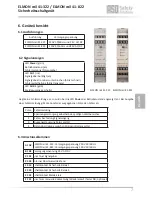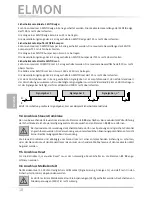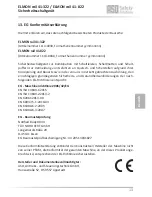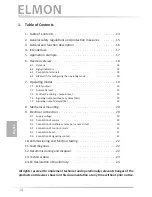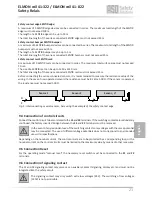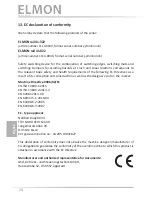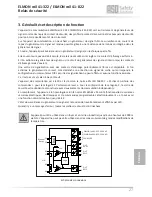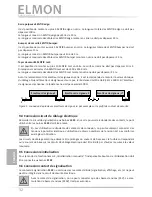
20
Safety Relais
English
8. Mechanical mounting
The switching unit must be mounted correctly:
• In a dust-protected and moisture-protected switch cabinet or casing.
• For use in an environment with level 2 contamination.
• With a protection type of at least IP54.
• On a 35 mm DIN support rail according to EN 50 022.
The switching unit can be installed in any position.
The unit must not be operated in areas with major temperature changes.
9. Electrical connection
The switching unit can be destroyed by connection to the incorrect terminals.
Lines that are routed in the open air or outside the switch cabinet must be protected accordingly.
The limit values stated in the “Technical Data” for the supply voltage and the switching capability
of the relay must be observed.
9
.1 Supply voltage
The supply voltage can
optionally
be effected by means of a mains voltage of 230 V AC 50/60Hz
(ELMON rail 41-822: 120 V AC 50/60 Hz) or a low voltage of 24 V AC/DC. For a supply with 24 V
AC/DC the voltage must correspond to the requirements for protective low voltages (SELV). The
supply line to the switching device must be protected by means of a 5x20 glass tube fuse 200mA
medium time lag.
Never apply both voltages simultaneously!
The 230 V (120 V) supply voltage must be applied to the
A1
and
A2
terminals. For operation with 24 V, the
supply voltage must be applied to the
B1
and
B2
terminals.
For a fixed installation a separating device must be available (for example, a main switch for the system). A
mains plug is sufficient as a separating device, if it is freely accessible.
9
.2 Connection of sensor
The sensor with a terminating resistor of 8.2 kΩ must be connected to the
X1
and
X2
terminals.
The sensor without a terminating resistor is connected to the
X1
and
X2
terminals by means of one lead and
with the other lead to the
X3
and
X4
terminals.
9.3 Connection of several sensors per sensor circuit
ASO-Sensors must not be connected in parallel.
One or several sensors can be connected to the signal transmitter input. For this purpose, the individual
sensors are connected in series in accordance with Figure 1.


